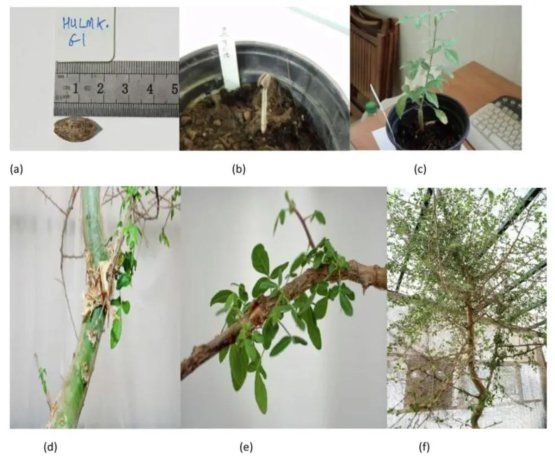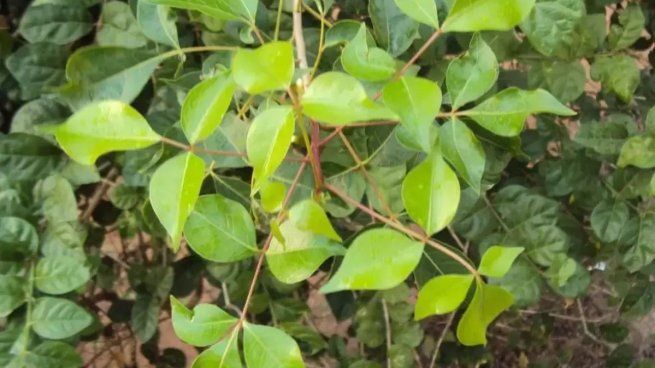The seed is around 1000 years old and was found in a cave near Jerusalem in the late 1980s. A study allowed it to be planted and thus obtain a biblical tree with healing properties that was extinct.
A study allowed it to be planted and thus obtain a biblical tree with healing properties that was extinct.
Courtesy Forbes
A recent study has revealed the surprising growing a tree from an ancient seed found in a cave near Jerusalem. According to researchers, this tree could be the source of a medicinal balm mentioned in the Bible. The seed was recovered during excavations in the Judean Desert in late 1980sand its age was determined by radiocarbon analysis, which dates its origin to around 1000 years.
The content you want to access is exclusive to subscribers.
Scientists believe the seed probably came from a tree population now extinctwhich grew in the southern Levant region, encompassing the present-day areas of Israel, Palestine and Jordan. It is the first time that a seed of this type has been found in this area. Thanks to its viability, the seed was planted and carefully cared for, sprouting in about five weeks. After 14 years of development, the tree has reached maturity, and has been named “Sheba”, in honor of the Queen of Sheba, who, according to legend, offered balms to King Solomon.


Sheba, a tree with unique characteristics
“Sheba” has become a tree of approximately 3 meters highwith a bark that peels off thin layers and a dark green color inside. this tree deciduouswhich loses its leaves in the cold months, belongs to the genus Commiphoraknown for producing aromatic resins. However, unlike other species of the genus, laboratory tests revealed that “Sheba” has minimal fragrance, suggesting that it produces a resin with healing rather than aromatic properties..
millennialtree1.jpg

FIGURE 1: (a) old seed before sowing (b) developing seed at 5 weeks showing epicotyl and developing cotyledons covered by seed coat (c) seedling (6 months) (d) peeling bark (12 years) (e) leaves showing fine hairs (12 years) (f) mature tree (12 years). Permission for the use of the images shown in Fig. 1(a) and (cf) was granted by Mr. Guy Eisner and by Dr. Elaine Solowey for Fig. 1(b).
Courtesy Forbes
By conducting DNA tests, researchers concluded that “Sheba” is a unique and potentially extinct species of Commiphoraa genre famous for its resins used in perfumes, incense and medicines. When cutting its bark, the tree exudes a small amount of oleoresin that has been shown reduce inflammation in human tests. Additionally, the resin was found to contain squalene, a compound with antioxidant properties that could have been used to treat and protect the skin.
The study suggests that the inhabitants of the region in ancient times knew the medicinal qualities of these trees and planted them with curative purposes. The researchers propose that “Sheba” resin could be the “tsori”a balm highly appreciated in ancient times and mentioned in several biblical texts. This compound was used not only with medicinal purposes, but also in the production of perfumes, to embalm bodies and as an antidote against poisons.
The uncertain future of “Sheba”
Despite advances in research, scientists have not been able to determine with certainty which exact species “Sheba” belongs to, as the tree has not flowered, preventing more detailed reproductive analysis. For now, it is unknown if “Sheba” will ever bloom.which leaves in suspense the possibility of obtaining more information about this fascinating find.
In conclusion, the “Sheba” tree represents a lost lineage of trees which was once common in the Levant, but which apparently became extinct around the 9th century. This discovery raises questions about the causes of the disappearance of these species and opens the door to new research into the medicinal properties of their resin.
Source: Ambito
I am an author and journalist who has worked in the entertainment industry for over a decade. I currently work as a news editor at a major news website, and my focus is on covering the latest trends in entertainment. I also write occasional pieces for other outlets, and have authored two books about the entertainment industry.




